
| home | catalogue | history | references | appendix |
 |
surfresearch.com.au
references : books s
|
| a |
|
|
|
|
|
|
|
|
|
|
|
|
|
|
|
|
|
|
|
|
|
|
|
|
|
| 1969 St. Pierre, Brian The Plastic Fantastic Voyage - Across the South Pacific with Surfers and a Camera Coward - McCann, Inc. New York. 1969 Hard cover, 253 pages, black and white plates. Review |
 |
| 2019 Santella, Chris: Fifty Places to Surf Before You Die |
 |
| 1874-1968 Scammon, Charles M: The Marine Mammals of the Northwestern Coast of America. Dover Publications, 180 Varick Street, New York, NY, 10014, 1968. Originally published by John H. Carmany and Company, San Francisco, and G.P. Putman's Sons, New York, 1874. Softcover, 325 pages, black and white plates and illustrations, Appendix, Index. Review See
|
 |
| 1915 Schnack, Ferdinand John Henry: The Aloha Guide: The Standard Handbook of Honolulu and the Hawaiian Islands. Honolulu Star-Bulletin, 1915. Internet Archive https://archive.org/details/alohaguidestand02schngoog See: 1915 Ferdinand Schnack: The Aloha Guide. |
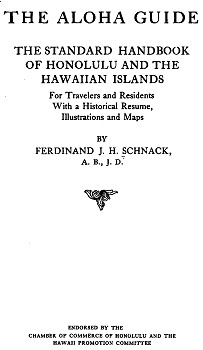 |
| 2010 Schou, Nicholas: Orange Sunshine : the Brotherhood of Eternal Love and its quest to spread peace, love, and acid to the world. New York Thomas Dunne Books 2010 Thomas Dunne Books/, St. Martin's Press, New York, 2010. Paperback, 306 pages, black and white photographs, Acknowledgements, Index. Review Interesting. Noted: Page 80: John "The Farmer" Griggs and Hynson model surfboard in Kauai, circa 1967, (Melinda Merryweather) It is highly improbable that this board appeared in 1967, at best possibly late 1968. The tail appears unusual, but it is hard to draw conclusions given the quality of the image. Page 212: The Mexican weed unloaded from the Aafie quickly became famous throughout Maui as "Lightning Bolt." The 70 foot wooden yacht the Aafie was purchased in the Virgin Islands with the intention of sailing to Pakistan for a load of Afghani hash, to be purchased with the funds from first smuggling a boat-load of marijuana (colitas) from Mexico to Hawaii. The yacht unloaded her cargo at Hana on Maui in early 1970, but failed to complete the voyage to Pakistan. . |
 |
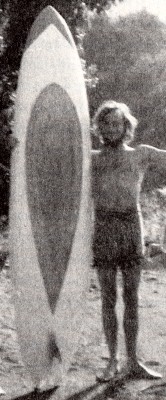 |
| 2015 Seal, Graham: The Savage Shore- Extraordinary stories of survival and tragedy from the early voyages of discovery to Australia. Allen & Unwin, Australia, July 2015. Soft cover, 320 pages, colour plates, Acknowledgements, Notes, Bibliography Review. In considerable detail, the book expertly examines the earliest European contacts with the Australian continent and its many offshore islands. However, while Seal has established that "in terms of what is known and what can be reasonably argued, European occupation began long before the usually accepted date," (page 244) his contention that these largely inadvertent short-term visits could be reasonably said to be "settlement" is spurious. At this point, it appears that Australia was settled in a planned voyage by a functional social group, three times. The first was on rafts around 50,000 BC, followed by the settlement of the northern coasts and Torres Strait Islands around 1000 BC in canoes, and for the third time in sailing ships in 1788. |
 |
| 2011 Searle, Louise (Editor): The Surf Girl Handbook - The Essential Guide for Surf Chicks Everywhere Surf Girl Magazine in association with Roxy. Orca Publications, Berry Road Studios, Berry Road, Newquay, Cornwell, UK, 2011. Soft cover, 160 pages, colour photographs, Glossary, Index, [Notes on Contributors]. www.surfergirl.com www.orcasurf.co.uk Review Introduction to surfing aimed at a female readership, with the usual topics. Not
the first Surf Girl book supported by Roxy
(Quicksilver's female brand), see:
|
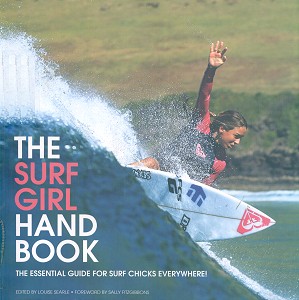 |
| 1965 John Severson Learn to Surf Jantzen, 1965. Soft cover, duo-tone photographs and illustrations. Review A surfing instruction manual to promote Jantzen swimwear, written by the editor and founder of Surfer magazine. Includes a basic glossary. See: John Severson: Learn to Surf |
 |
| 2014 Severson, John: Surf Puka Puka, Pa'ia, Hawaii, 2014. Printed by Damiani, Bolonga, Italy. Hard cover, 159 pages, black and white and colour illustrations and photographs, Forward by Gerry Lopez, Afterword by Drew Kampion. Review An extensive interview with John Severson by Nathan Howe covering his surfing career featuring his photography, films, magazines and art works which are illustrated throughout this beautiful book. |
 |
| 2009 Smale, Richard : Swimming ... do it this way. Learn your swimming from photographs Photographs by John Barlee. John Murray, London, 1953. John Murray, London, 1962 (second edition, 86 pages). Hard cover, 261 pages, black and white photographs. Review Rishard Smale was an English swimming coach, his clear swimming and diving instructions augmented with extensive photographs. The book is totally devoid of surfing content, however, in 1954 Smale noted: During the latter half of the last century, with its developing world trade, mariners brought back tales of natives of the South Sea islands, lying on surfboards and kicking their feet up and down to get greater speed. To meet the needs of competitive swimming, this new kind of leg kick, as practised by the South Sea natives, was adapted to the Trudgen stroke - its modification became known as the Trudgen crawl. Many modifications followed as the result of swimming coaches' experiments throughout the world, which gave rise to such names as the "American crawl," "Australian crawl," 'Japanese crawl," etc. These interpretations are no longer used, for the "CRAWL" is now universally understood and practised. Trove 1954 'A Sport A Long With History', The Maritime Worker (Melbourne, Vic. : 1938 - 1954), 26 October, p. 8. , viewed 31 Dec 2016, http://nla.gov.au/nla.news-article209326598 |
 |
| 2009 Smith, Bob : The Basics of Surfboard Design (What Your Shaper Isn't Telling You) Know Surfing and Surf Better by Understanding the Surfboard Shape; Key to Surfboard Shaping and Construction, or An Illustrated Guide for Surfers, Shapers, Enthusiasts. Copyright: Bob Imoff (2008) Rembrandt Publishing House, United States, 2008. Soft cover, 48 pages, black and white illustrations. Review Well intentioned and informative work, unfortunately plagued by less than rigorous definitions and explanations. The chapter on length does not distinguish between bottom and deck length and retains the use of the misleading terms short and/or long board. Basically, surfboards shapes, and the shapes of the breaking waves they ride, can be incredibly complex, and are always a function of the skill of the rider. http://www.farbeyondsurfing.com/Surfing.html |
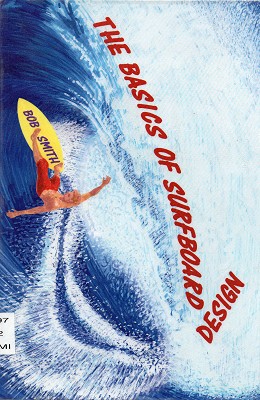 |
| 2006-2016 Smith, Chas : Welcome to Paradise, Now Go to Hell: A True Story of Violence, Corruption, and the Soul of Surfing It Books, 2006. HarperCollinsPublishers, New York, Nero, It Books, 2013. Nero, 2016. Soft cover, 247 pages, colour photographs on inside covers, Acknowledgements, Index. Review Welcome to Paradise, Now Go to Hell, is surfer and former war reporter Chas Smith’s wild and unflinching look at the high-stakes world of surfing on Oahu’s North Shore—a riveting, often humorous, account of beauty, greed, danger, and crime |
  |
| 2018 Smith, Chas: Cocaine + Surfing: An Outrageous Expose Hachette Australia, Kent Street, Sydney, Australia, 2018. First published by Rare Bird Books, United States, 2018. Paperback, 277 pages, Introduction by Matt Warshaw, Timeline, Acknowledgements, About the Author. Review A mildly entertaining ramble, largely focused on professional surfers' use of cocaine since the 1970s, culminating with the death of Andy Irons. However, Smith's contention that surfing began in Peru (page 271) and it was subsequently exported to Polynesia (hence surfing and cocaine) is demonstrably incorrect; a regrettable example of journalist's disease (don't let the facts get in the way of the story). Fortunately, I did not purchase this book; this copy courtesy of Shoalhaven City Library. See: http://www.historiadelatablaenperu.com/en/chapter1.htm Also note: Schou, Nicolas: Orange Sunshine : the Brotherhood of Eternal Love and its quest to spread peace, love, and acid to the world Thomas Dunne Books - St. Martin's Press, New York, 2010. and Smith, Chas: Welcome to Paradise, Now go to Hell : a true story of violence, corruption, and the soul of surfing. Various publishers, 2013-2017. |
 |
| 2007
Spacejunk and Quicksilver: Art on Foam. Spacejunk Grenoble 15 rue Genissieu, 38000 Grenoble France, 2007 Soft cover, 57 pages, colour photographs. Review A selection of decorated surfboards commisioned from some significant artists associated with board sports. A similar in theme to Burgoyne and Leslie: Board : Surf Skate Snow Graphics (1998). Limited edition of 5000 copies. This copy, courtesy of John McInnes |
 |
| 1968 Spinner, Stephanie: Water Skiing and Surfboarding. Illustrations by Irwin Greenberg. A Golden Pocket Guide
Golden Press, New York, 1968 Hard cover, 33 pages, colour illustrations, Glossary. Review A junior instruction book with bold and bright illustrations. |
 |
| 2014 Stanbury, Lee: Advanced Surf Fitness Orca Publications, Newquay, UK, 2014. Soft cover, 208 pages, colour photographs, Index. |
 |
| 1867
Steedman, Charles: Manual of Swimming: including Bathing, Plunging, Diving, Floating, Scientific Swimming, Training, Drowning, and Rescuing Henry Tolman Dwight, Bourke Street, Melbourne Lockwood and Co, London. 1867. Review. See
|
 |
| 1963 Stevens, Fae Hewston: Koronglea Holidays. Illustrated by Ian Nimmo Forrest Ward Lock and Co., London, Melbourne, Cape Town,1963. Hard cover, 221 pages, black and white illustrations Review. Centred on the Dixon family's property, Koronglea, a big sheep and wheat farm in northern Victoria, this is one of five in the Koronglea series of Australian children's books, all illustrated by Ian Nimmo Forrest. In the third book, Mr. Dixon and the boys Max, Hugh and Johnny visit Melbourne and then drive to Lorne to try surfboard riding. Later that day they take the ferry cross Port Phillip Bay from Queenscliff to Sorrento and Portsea, returning to Geelong for dinner. The surfing illustration on the dust jacket extends to the back and their are two black and white sketches inside. See 1963 Fae Stevens and Ian Forrest: Surf Riding at Lorne. |
 |
|
2011
Stranger, Mark: Surfing Life: Surface, Substructure and the Commodification of the Sublime Ashgate, Farnham, 2011. Hardcover, 276 pages, black and white photographs, Bibliography, Index. Review One of several similar works from academia appearing in the early 21st century, unfortunately for this reader, in places it is almost indecipherable. And, as Ralf Buckley has written elsewhere, many of these messages, once we find them, seem to be rather obvious; (and) none of these observations seem particularly novel or noteworthy. After 248 pages, Mark Stranger concludes that he has argued that postmodernity provides an environment in which the self can become anchored in the shared transcendent experience of bodily practices that are the foundation for stable social formations. Through interaction with the sublime in nature which risk-taking can provide, the self 'experiences itself' in communion with the world. This transcendence is both a loss of self and an expanded sense of self, whereby subject and object merge in static experience. The shared knowledge of ecstatic experience underpins the surfing subculture's social formations at the level of the band, tribe and nation. (page 249) The discussion of surfcraft is limited to shortboards, longboards and bodyboards, and is occasionally less than rigorous: Although (shortboards are) typically shorter in length than longboards this is not necessarily the case. (page 72) Furthermore, the assertion that (all) surfers do not measure waves according to any recognized scientific method (page 93) is questionable; at least Peter Dixon (Men and Waves , 1966) and myself adhere to the Willard Bascom method. A Treasury of Surfing In a footnote relating to estimating breaking wave height Strange Publisher Notes: Surfing Life is a study of surfing and social change that also provides insights into other experience-based contemporary subcultures and the nature of the self and social formations in contemporary society. Making use of extensive empirical material to support innovative theoretical approaches to social change, this book offers an analysis of the relationship between embodied experience, culture and the economy. With its ground breaking theoretical contributions, and its foundation in an ethnographic study of surfing culture in locations across Australia, this volume will appeal not only to those interested in the social and cultural phenomenon of surfing, but also to anyone interested in the sociology of sport and leisure, the sociology of culture and consumption, risk-taking, subcultures and theories of contemporary social change. (page 249) Compare and contrast: Walker, Isaiah Helekunihi: Waves of Resistance : Surfing and History in Twentieth-century Hawaiʻi (2011) Westwick, Peter and Neushul, Peter: The World in the Curl: An Unconventional History of Surfing (2013) Warren, Andrew and Gibbson, Chris: Surfing Places, Surfboard Makers (2014) Laderman, Scott: Empire in Waves - A Political History of Surfing (2014) |
 |
| 1874
Stoddard, Charles Warren: Summer Cruising in the South Seas. Chatto and Windus, London. 1874. London: Chatto and Windus, 1881. An uncommon English version of Stoddard's classic about his travels in Hawaii and Tahiti, with illustrations by Wallace Mckay that appalled many ("repulsive and vulgar" - W. D. Howells) with their depiction of frolicking naked maidens. The American edition contained no illustrations. This second printing, seven years after the 1874 first Chatto and Windus edition, contains ten fewer plates, but the maidens have been retained. 1987
Edition (Cover image, right). |
 |
| 1892-1901 Stoddard, Charles Warren: A Trip to Hawaii New edition, with descriptive introduction. Published by Passenger Dept., Oceanic Steamship Co., San Francisco, 1901. Soft cover, 46 pages, colour and black and white photographs and illustrations. openlibrary.org http://openlibrary.org/books/OL25126558M/A_trip_to_Hawaii Review. A promotional booklet published by the Oceanic Steamship Co., it was first printed in 1892 with black and white illustrations and photographs and was based upon a visit to Hawai'i by Stoddard in 1885. Subsequent editions, the fourth in 1897 and a fifth in 1901, changed the cover and added illustrations, some of which were coloured. These later editions featured a coloured illustration of a surfboard rider framed by Diamond Head and the 1901 edition included a black and white photograph of a native Hawai'ian holding a surfboard on Waikiki Beach, circa 1898. In the introductory notes there is a brief mention of surfriding, in the original text Stoddard only refers to sea bathing. There are some revelant descriptive passages of the island geography. See
Source Documents |
 |
| 1905 Strong (Field), Isobel: The Girl from Home - A Story of Honolulu. McClure, Phillips & Co., New York, 1905. Internet Archive http://archive.org/details/girlfromhomestor00fielrich Review The step-daughter of Robert Louis Stephenson, Isobel Strong resided in Honolulu with her husband Joseph from 1882 to 1890, where she was a drawing teacher in the public schools was was known in the local art scene for her drawings and cartoons. The novel, set during her stay, contains one chapter centred around a night surfing party held at Waikiki by the then king, David Kalakaua. Chapter 16 has an account of canoe surfing and surfboard riding by "old Kaipo." See Source Documents
|
 |
| 2004
Sumpter, Rod: 100 Best Surf Spots in the world. The Globe Pequot Press The Insiders Guide, Guilford, Connecticut, 2004. Soft cover, 229 pages, colour photographs, maps, tables. Review. A .. |
 |
| 1931
Slessor, Kenneth: Surf - All About It. 1931. No author, editor or publishing details in evidence. One copy noted with a pencil annotation on page which appears to attribute copyright to "Slessor 26.2.31". Soft cover, 50 pages, black and white illustrations and diagrams. Review. A jovial and enthusiastic promotional work for surfb-athing in a wide range of manifestations. The author is not identified and two contributing columnists have the by-lines "Medico" and "Eve", the later advising on Beauty and the Beach, pages 27 to 29. Profusely illustrated with black and white illustrations (some of high quality) and cartoons, the later the only apt description for the Surfing Map on page 49. There are some black and white photographs, but these are only used in advertisements. For surfboard riding extracts see Source Documents: 1931 Slessor : Surf - All About It. |
 |
| 2017 Surfing Australia: The Best of the Best: Australia's Greatest Surf Photographers Hachette Australia, 2017. Hard cover, 256 pages, black and white and colour photographs, Photographers, Thanks by Andrew Stark, CEO. Review. Featuring the winners and finalists of the Nikon Surf Photo of the Year 2013 to 2017 in conjunction with Surfing Australia. With an introduction from 6 x World Champion Stephanie Gilmore. |
 |
| 1932 The Surf Life Saving Association of Australia : The Australian Surf Life Saving Handbook Eighth Edition (Revised 1932) JNO, Evans and Son Printing Coy., 486-488 Kent Street Sydney, New South Wales Soft cover, 263 pages, black and white photographs, black and white illustrations, Index. Review Note : Plan and Specifications (solid wood Alaia surfboard), pages 196-170 Instructions for use ofSurf Board, page 170 Rescue work with Surf Boards, includes rules for Board Rescue Event, pages 172 - 173: and Plans and Specifications for Surf Life Saving Boats pages 150 - 154. Also note photographs : 1. Propelling a Suf Board, page 83. Possibly Claude West. 2. Many of the Australian Surf Life Savers are skilled surf-board riders, page 171 3. Riding and shooting the breakers on Sydney beaches, page 171. 4. Surf Boards and Riders, page 173. Probably Palm Beach. Note that there is no mention or photographs of Surfskis. |
 |
| 1938 The Surf Life Saving Association of Australia : The Australian Surf Life Saving Handbook Tenth Edition (Revised 1938) JNO, Evans and Son Printing Coy., 486-488 Kent Street Sydney, New South Wales Soft cover, 287 pages, black and white photographs, black and white illustrations, Index. Review Text highlights (same as 1932 Edition above) : Plan and Specifications (solid wood Alaia surfboard), pages 182 - 183 Instructions for use of Surf Board, page 183 Rescue work with Surf Boards, includes rules for Board Rescue Event, pages 184 - 185; and Plans and Specifications for Surf Life Saving Boats pages 161 - 167. Also note photographs, three from the 1932 Edition (marked ##) : 1. Propelling a Suf Board, page 83. ## Possibly Claude West. 2. Five riders and boards at shoreline (uncaptioned), page 102 ## Probably Palm Beach. 3. Surfskis (uncaptioned), page 180. Early models - plus 26 inches wide with paddle ropes. Not referred to in the text. 4. Showing surfboard "shooters" taking a wave, page 181. ## Previously captioned ...Australian Surf Life Savers... 5. The Rubber Surf Float, page 267. Surfoplane carried by competitor in club cap. Not referred to in the text |
 |
| 1947 The Surf Life Saving Association of Australia : The Australian Surf Life Saving Handbook Fifteenth Edition (Revised June 1947) JNO, Evans and Son Printing Coy., 486-488 Kent Street Sydney, New South Wales Soft cover, 282 pages, black and white photographs, black and white illustrations, Index. Review Text highlights, mostly reprinted from previous editions (marked ##) : Specifications for making a Hollow Surf Board, pages 208 - 209. A variation on Tom Blake's Hollow Paddle Board 1937 Details and Specifications of Solid Surf Board , pages 210 - 211.## Instructions for use of Surf Board, pages 211. ## Surf Boards and Surf Skis Rescue Methods, pages 211 - 213 ## Surf Boards and Surf Skis Rules for Control by Clubs, page 213. Surf Board Race Rules, pages 274 - 275. Plans and Specifications for Surf Life Saving Boats pages 192 - 198. Also note photographs : 1. Surfboard race start, uncaptioned, Plate EX page 275, 2. Surfboard race finish, uncaptioned, Plate FX page 276, Both Manly, probably Ray Leighton. None of the surfing photographs from the previous editions are included. |
 |
| 2007
Surfrider Foundation: The Altas of World Surfing. Harper Collins Publishers 25 Ryde Road, Pymble, Sydney, NSW, 2073, Australia, 2007. 31 View Road, Glenfield, Auckland 10, New Zealand. Soft cover, 256 pages, colour maps and photographs, Forward by Mark Richards, Glossary, Web Links, Index, Acknowledgements. Review A global surf guide featuring the most recognised breaks prepared by a vast team of contributors. The
authorship of this work is difficult to ascertain, and
it is also accredited to Forbes, Scott (Project
manager, editor), see F.
|
 |
| 2016 Sutherland, Barrie; Pennings, John; Sutherland; Mal; and Weeks, Bob: Surfing in the Sixties Foreword by Bob McTavish, notes by Andrew Crockett. New Holland Publishers, London, Sydney, Auckland, 2016. Hard cover, 320 pages, b/w and colour photographs. Review A excellent publication was put together by four surf photographers whose work regularly appeared in magazines of the era. Importantly, unlike many retrospective books, a large number of the photographs have not been printed previously. Surfing competitions comprise a major part and there are individual chapters on surf fashion, surf lifesaving and cars. |
 |
| 2011 Sutherland, Bruce: The Stormrider Surf Guide Indonesia & the Indian Ocean Low Pressure
Publishing, United Kingdom, 2011.
Wilderness Press, United States, 2011. Paperback, 144 pages, black and white and colour photographs, maps, Key (inside front flap), Index Review Statistics on swell, wind, tide, and weather along with photos and maps are detailed for the various identified surf-breaks; along with information on meteorology, oceanography, and surf culture. Of particular interest for the historian is the overview of surf culture on page 16 which details the earliest reported surfers to first ride some the notable breaks of the Indian Ocean. |
 |
| 2008
Swanton, Will: Some Day - Inside the Dream Tour and Mick Fanning's 2007 World Championship Win. Allen and Unwin 83 Alexander Street, Crows Nest, NSW, 2065, Australia, 2008. Soft cover, 274 pages, colour plates. Review A profressionally written account of the 2007 world tour that follows the leading contenders as their results fluctuate. Despite Mick Fanning being photographed and named on the cover, he only tends to dominate the last chapters as he progresses towards the title. A refreshingly balanced account, at considerable variance to the standard surf media issue. Compare
and contrast: |
 |
| 1881
Swinton, William: Grammar School Geography - Physical, Political, and Commercial. Ivison, Blakeman, Taylor, and Company New York and Chicago,1881. Hard cover, 118 pages, colour and black and white maps, black and white illustrations. Review The Evening Bulletin published Alexander Hume Ford's first extensive article on surfriding, "Riding Breakers", on 17th July 1908. The brief introduction; at school in South Carolina, an illustration in his geography book invokes dreams of surfriding; almost reads like fantasy. An etching of a Polynesian beach scene apppears in William Swinton's Grammar School Geography, published in 1881. That year Ford would have been about twelve years old and probably was in school. See Surfing Images 1870 - 1890 Karst: Scene in Polynesia. Swinton, William: Grammar School Geography - Physical, Political, and Commercial. Ivison, Blakeman, Taylor, and Company New York and Chicago,1881, page 105. |
 |
| 1982
Symonds, Tom: Maroubra Surf Club - The First 75 Years. Lester-Townsend Publishing Pty. Ltd. Sydney, 1982. Hard cover, 103 pages, black and white photographs. Review For
extracts see Source Documents |
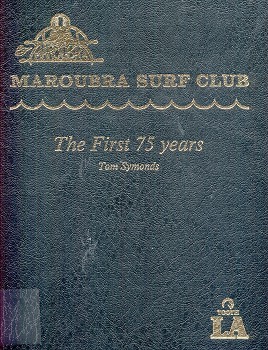 |
| a |
|
|
|
|
|
|
|
|
|
|
|
|
|
|
|
|
|
|
|
|
|
|
|
|
|

| home | catalogue | history | references | appendix |